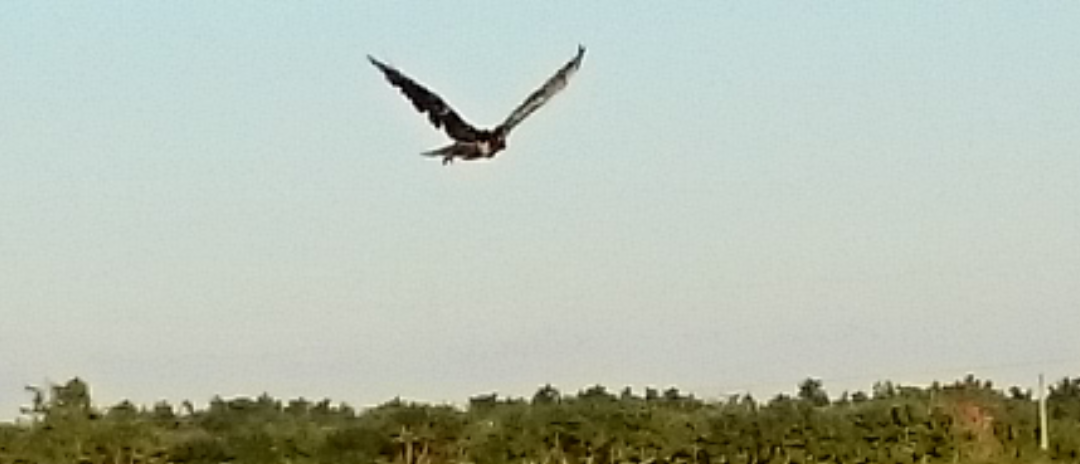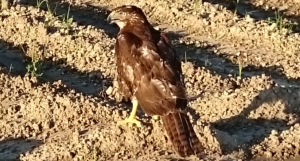
By Samantha Arner, Avian Biologist
The Falcon Batchelor Bird of Prey Center At Frost Science rehabilitates its seventh hawk this year.
In early March, we here at Frost Science released our seventh hawk back into the wild this year. This raptor happened to be a big, beautiful red-tailed hawk with a particularly interesting backstory.
Back in December just north of Redland, a Florida Fish and Wildlife officer spotted the hawk struggling, stuck in a fence. As the officer got closer, he saw the hawk’s left leg wedged in the fence, cocked at an odd angle. In his right foot he stubbornly clutched a prey item he’d caught, and was still trying to eat! This was one determined red-tailed hawk.
The FWC officer brought us the hawk, and we quickly used radiographs to confirm a left tibiotarsus fracture, which is analogous to a human tibia, or shin bone. Within hours we had the hawk in surgery, where our vet fixed external pins to hold the bone fragments together, and applied medications to to keep the pain and swelling down.
Most birds are a bit under the weather after surgery, but this one had other ideas. In less than a day it was active and alert enough to begin using both sets of talons as its main defense against staff. Despite its verve, we found it one morning in a regressed state, lying down and clearly uncomfortable. Upon examination, we realized the hawk had fractured its left leg yet again!
When most would question the probability of a hawk recovering from two severe fractures, the vet and staff here had high hopes for this fighter! For the second surgery, we pinned the left leg from top to bottom and kept there there for a month.
We removed the pins in mid-January and began the task of physical rehab by putting the raptor in an outdoor enclosure to build up flight muscles. At first the hawk refused to put weight on its left leg, but eventually regained confidence and strength. During live prey testing, the raptor was just as determined as it was the day it got tangled in the fence, and refused to let any prey item escape its grasp.
We still needed to ensure that the hawk was strong enough to fly long distances, though, so over the next month, staff members would enter the enclosure daily and attempt to make the hawk fly several lengths of the flight cage. This guy was stubborn, and refused to fly at all, until we used noise makers and even a bear imitation! Eventually the hawk flew the lengths necessary to be deemed okay for release!
On March 6th we drove the hawk to the area where it was originally found—despite the fence, the hawk had clearly thrived in this area. We joked among the staff that the other birds of prey in the area dreaded its return, for fear of losing out on prey items. Once we found a good spot—an open field surrounded by lush trees, which would provide a vantage point for hunting—we set the hawk free, but true to its stubborn nature, it just hung out in front of us and refused to fly. Luckily we’d brought that bear imitation, which worked right away; the hawk flew off to the tree line, where it sat surveying the territory where it would find its next meal.
